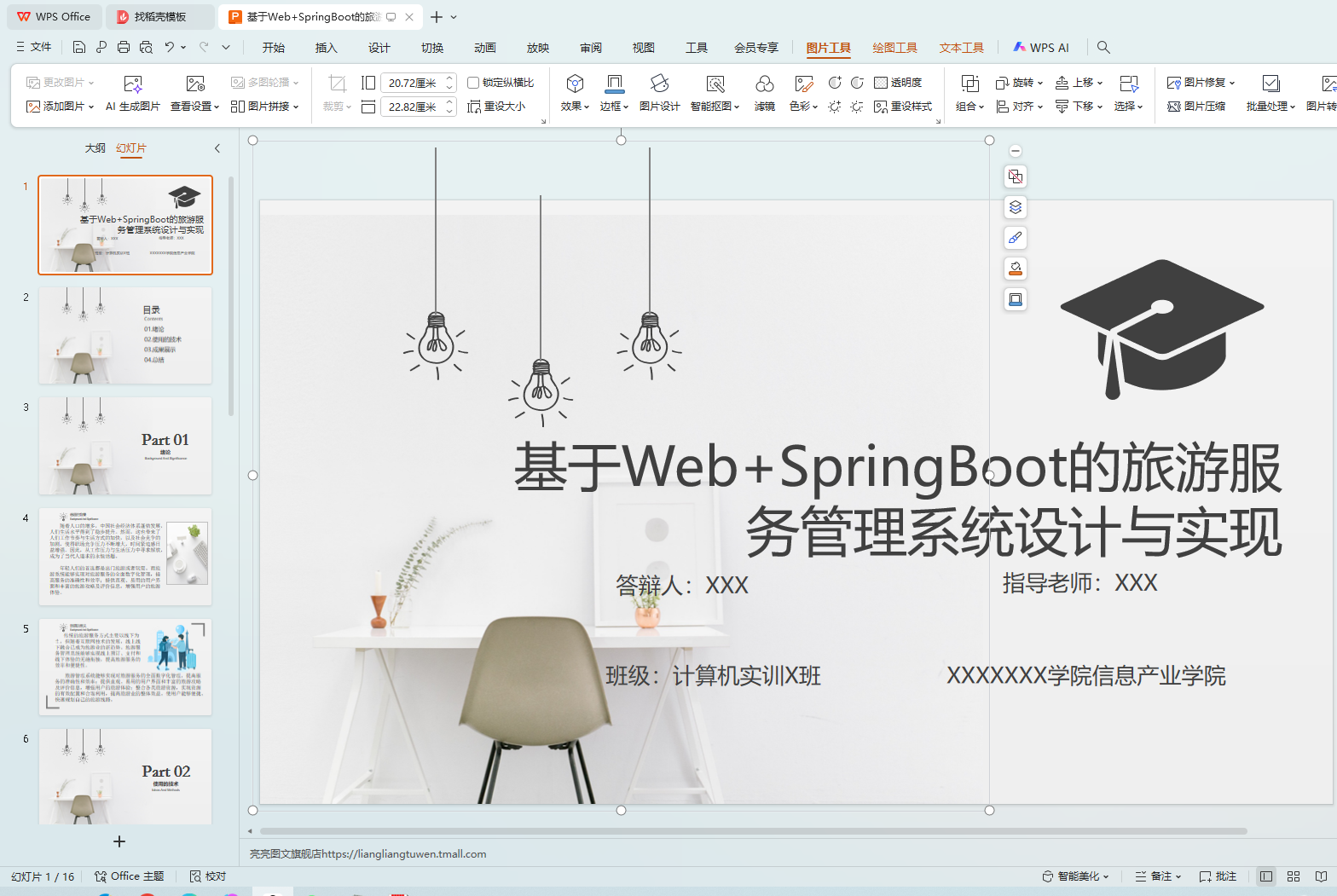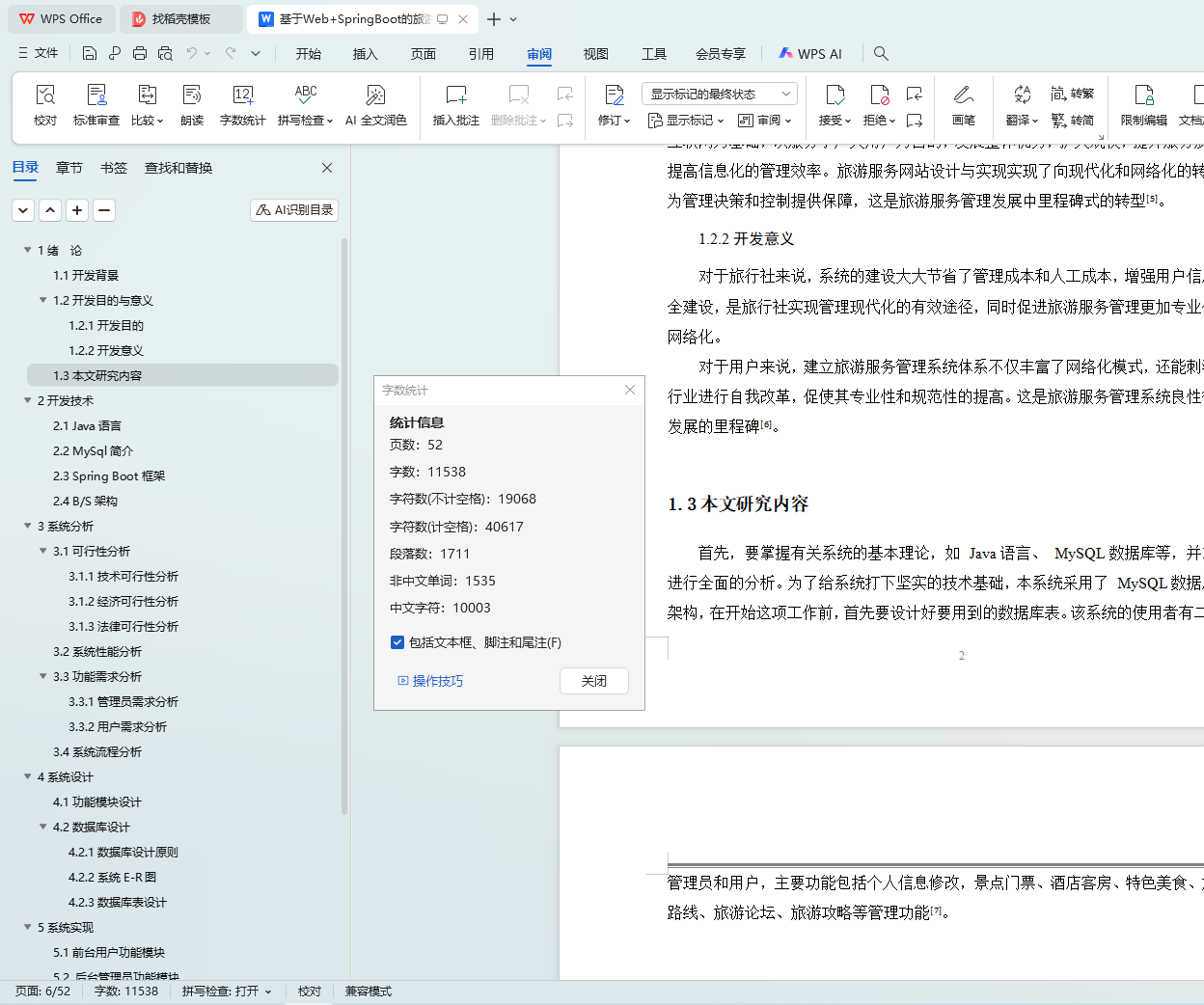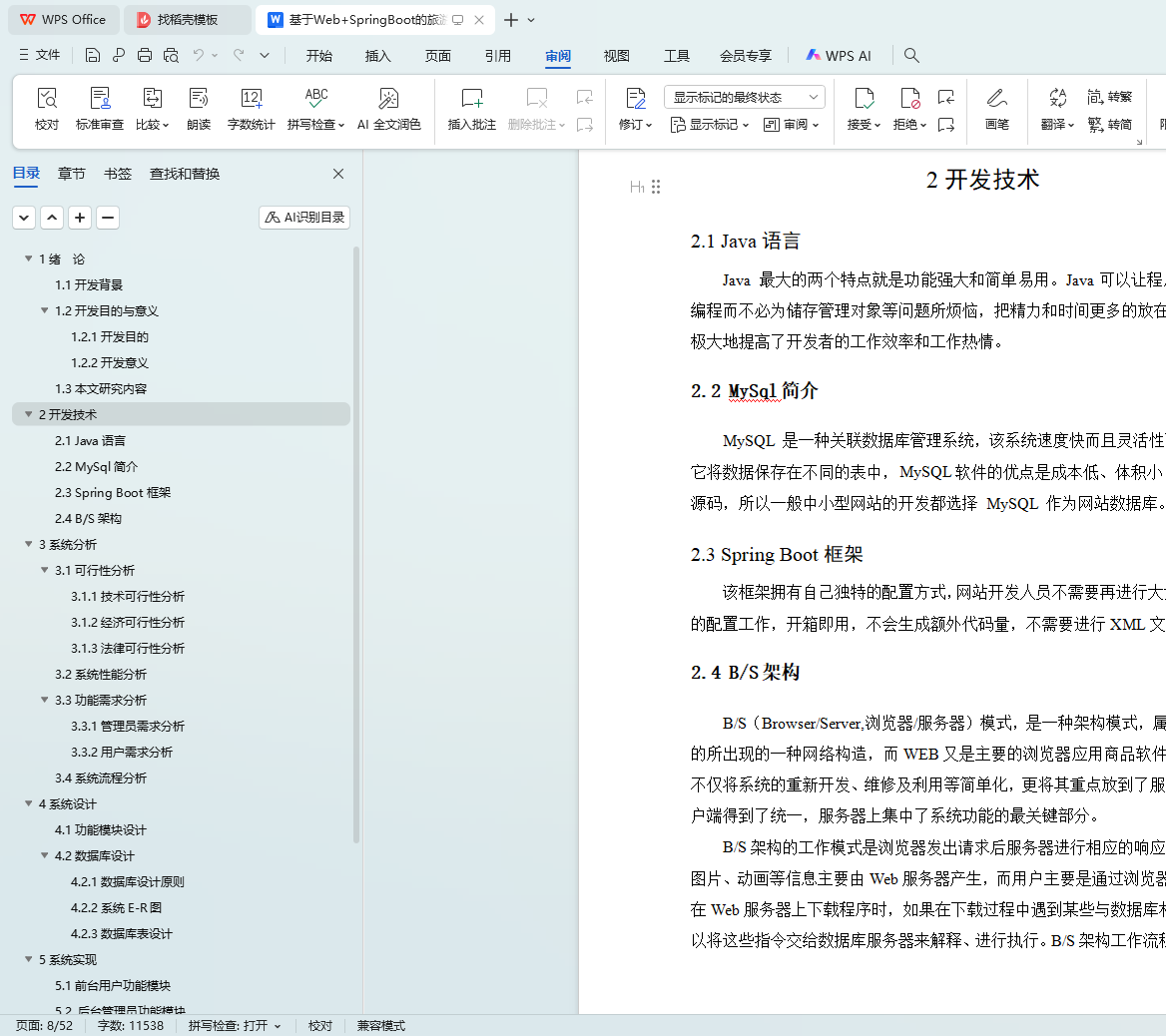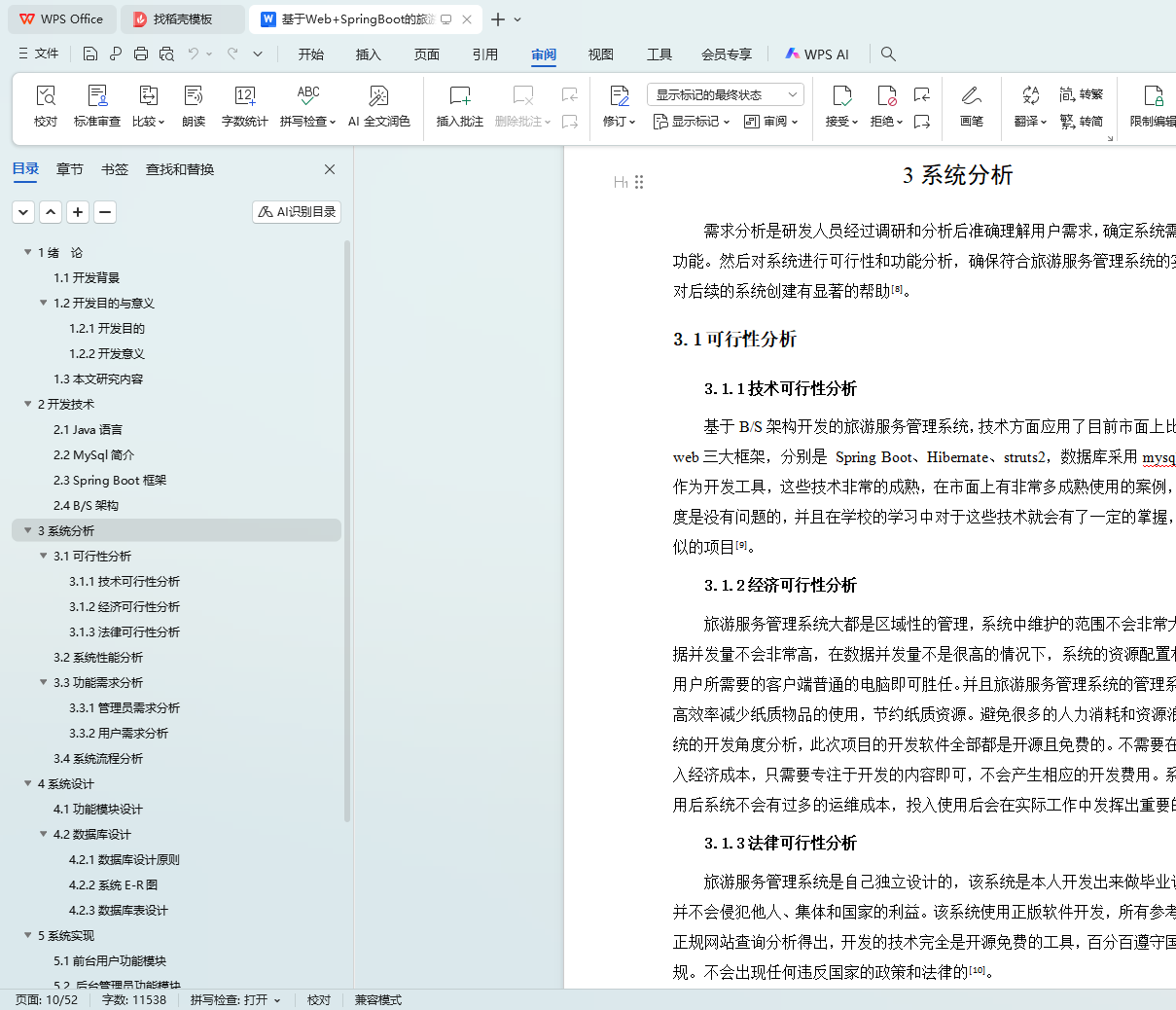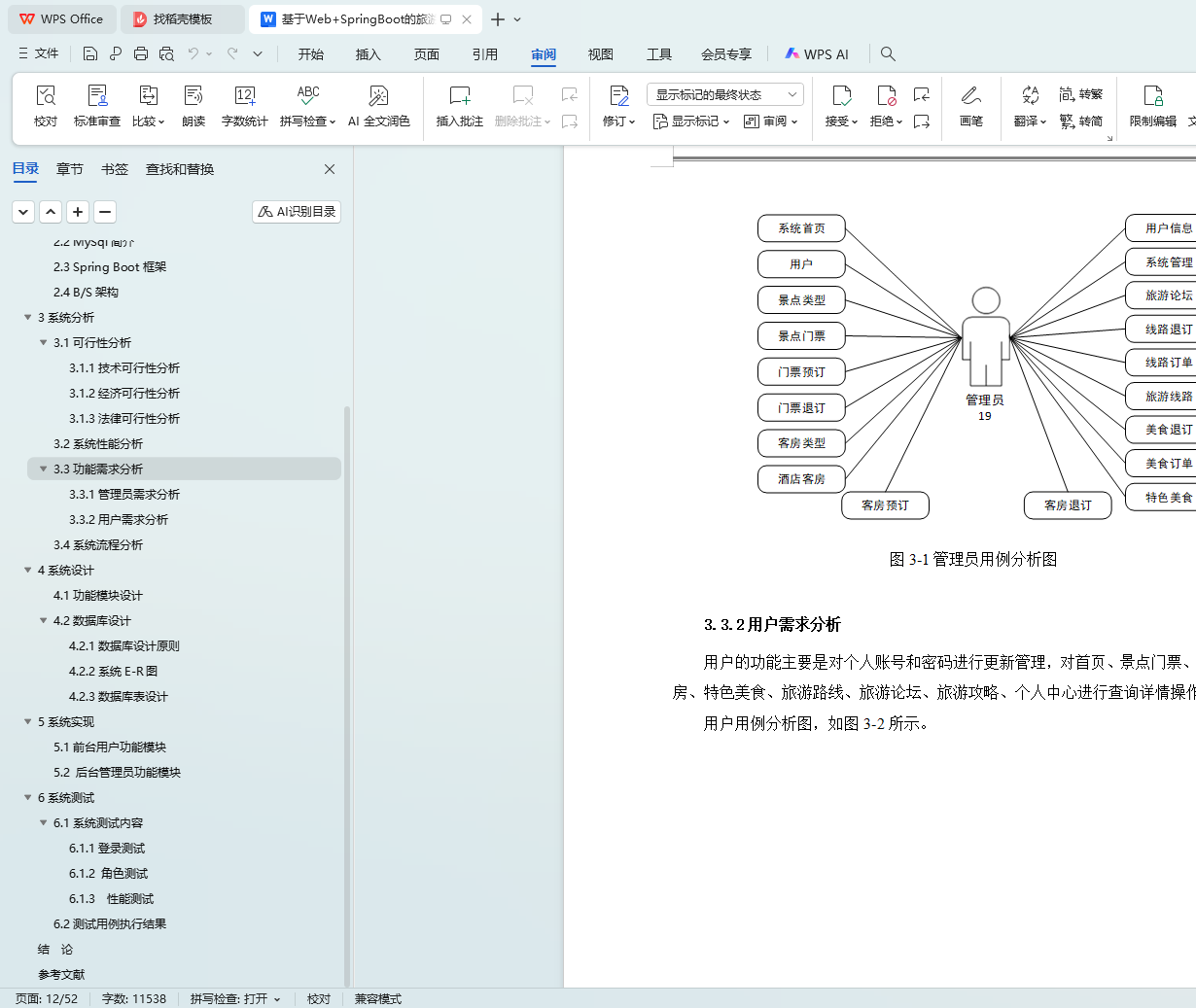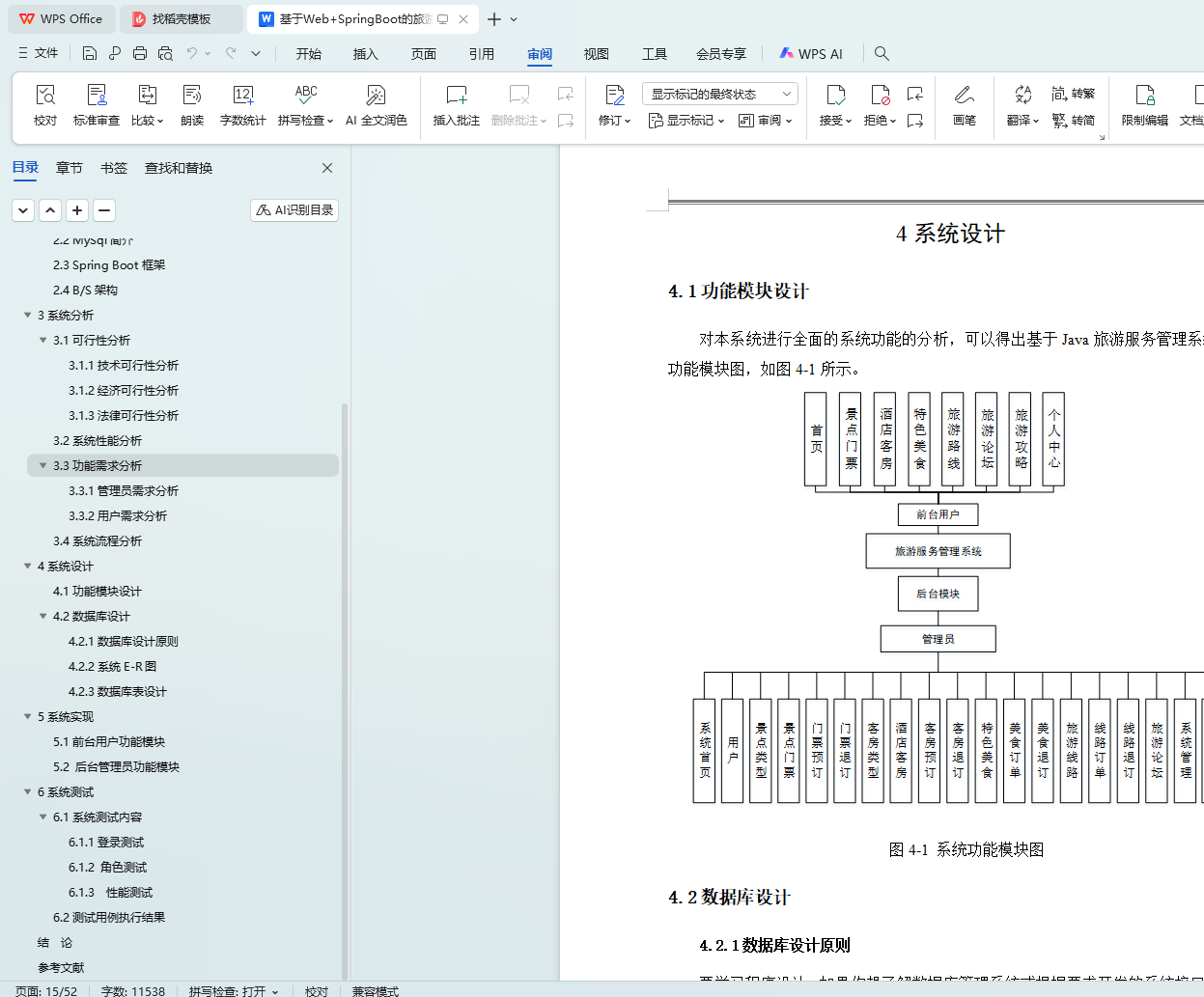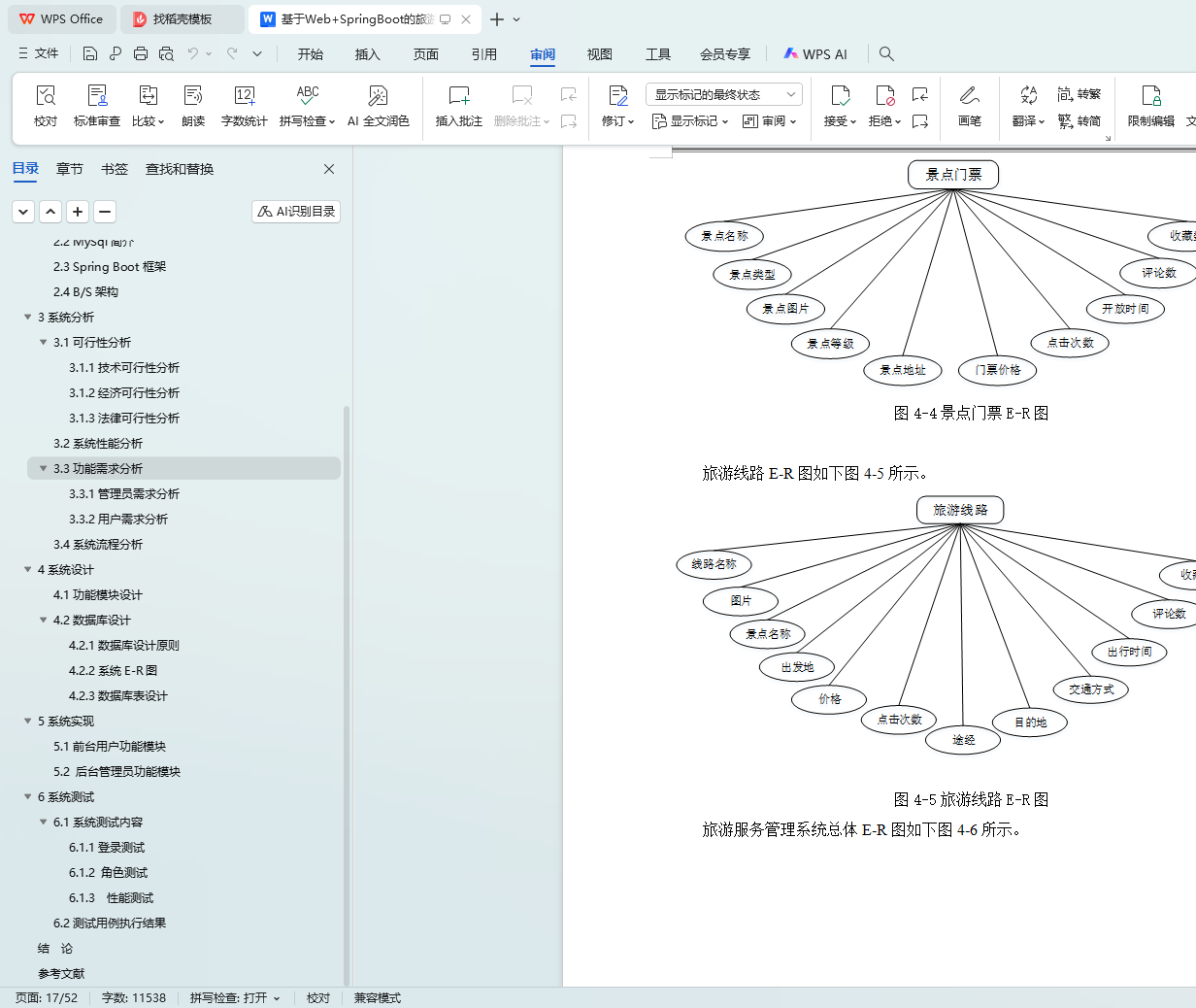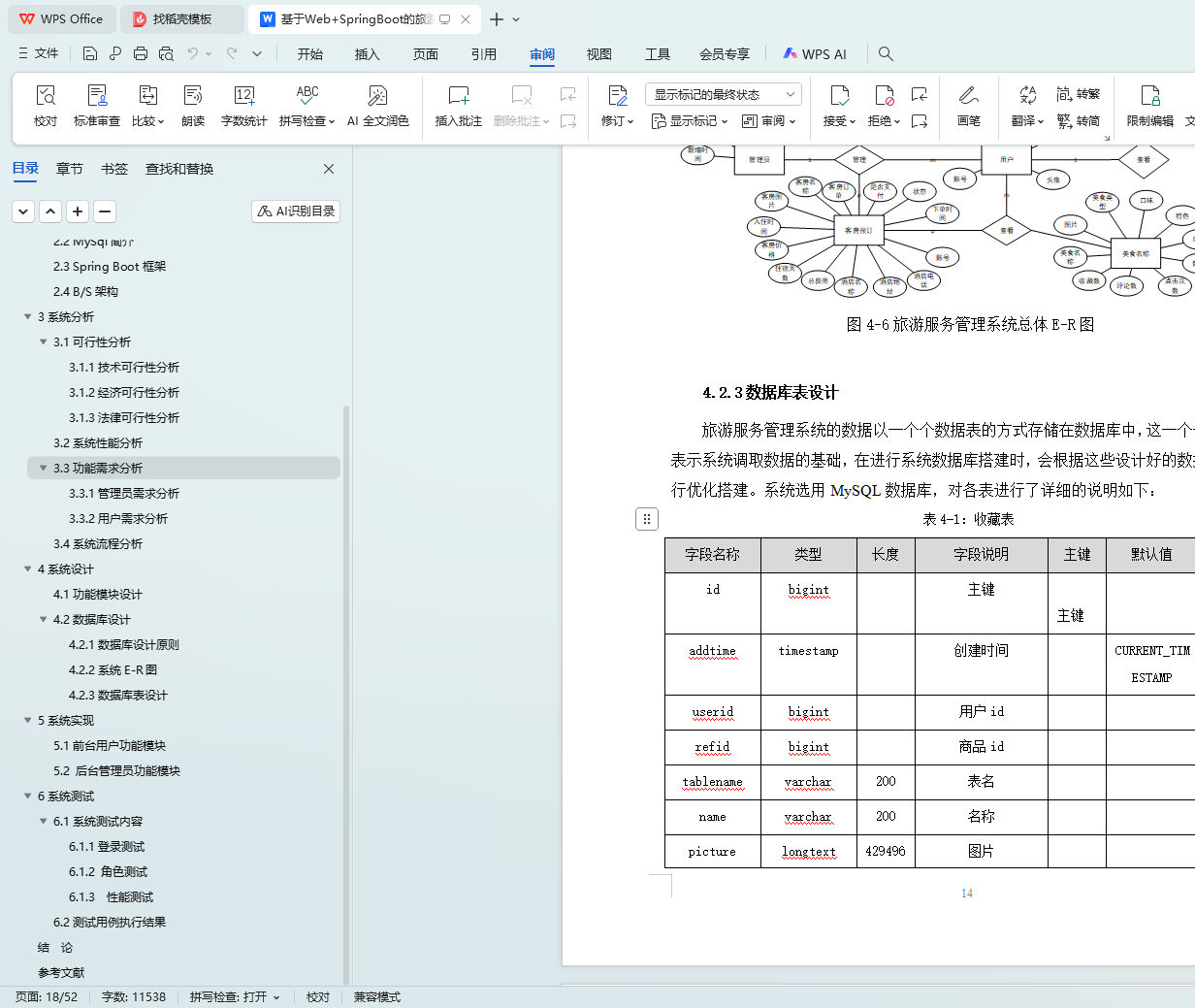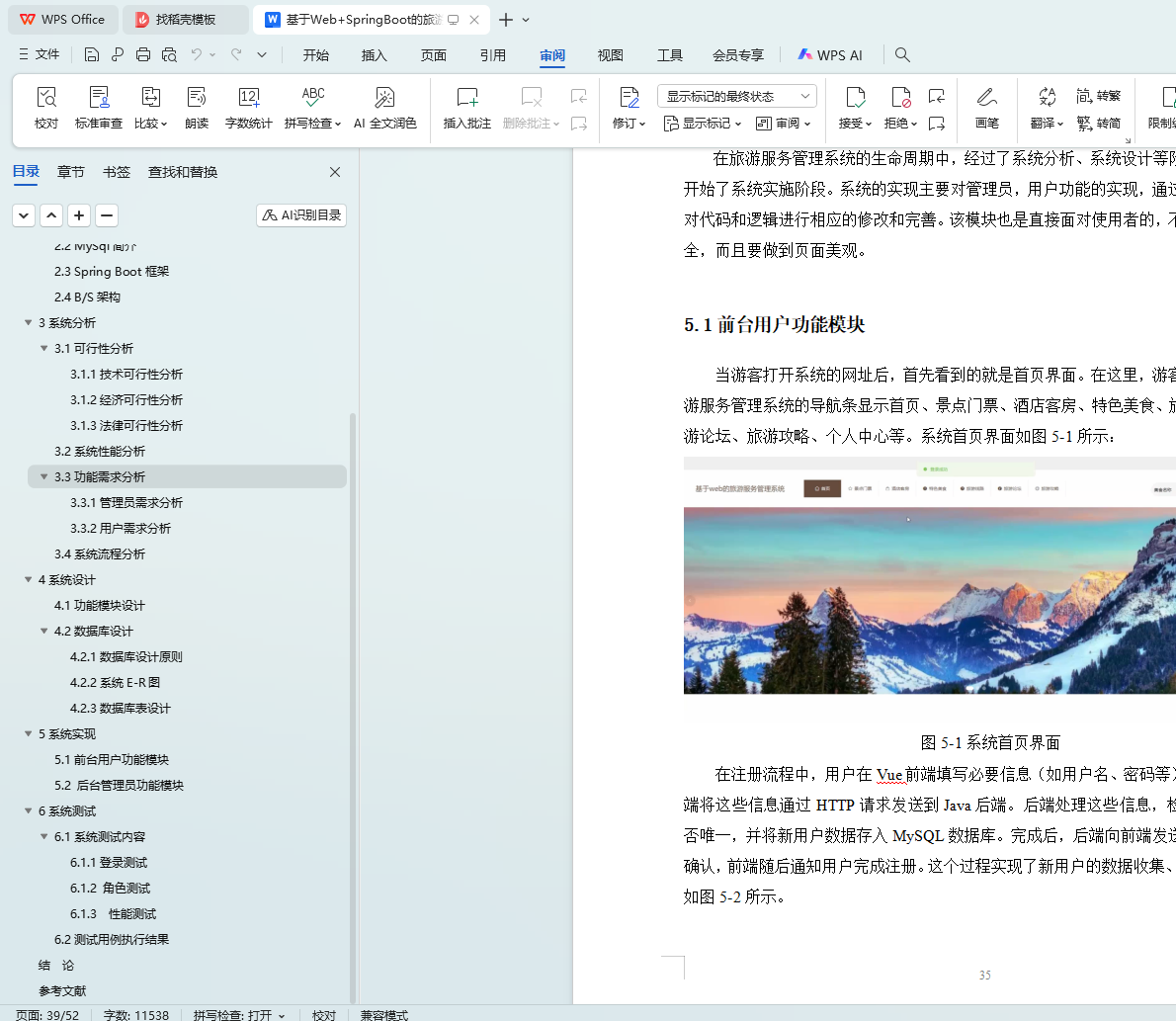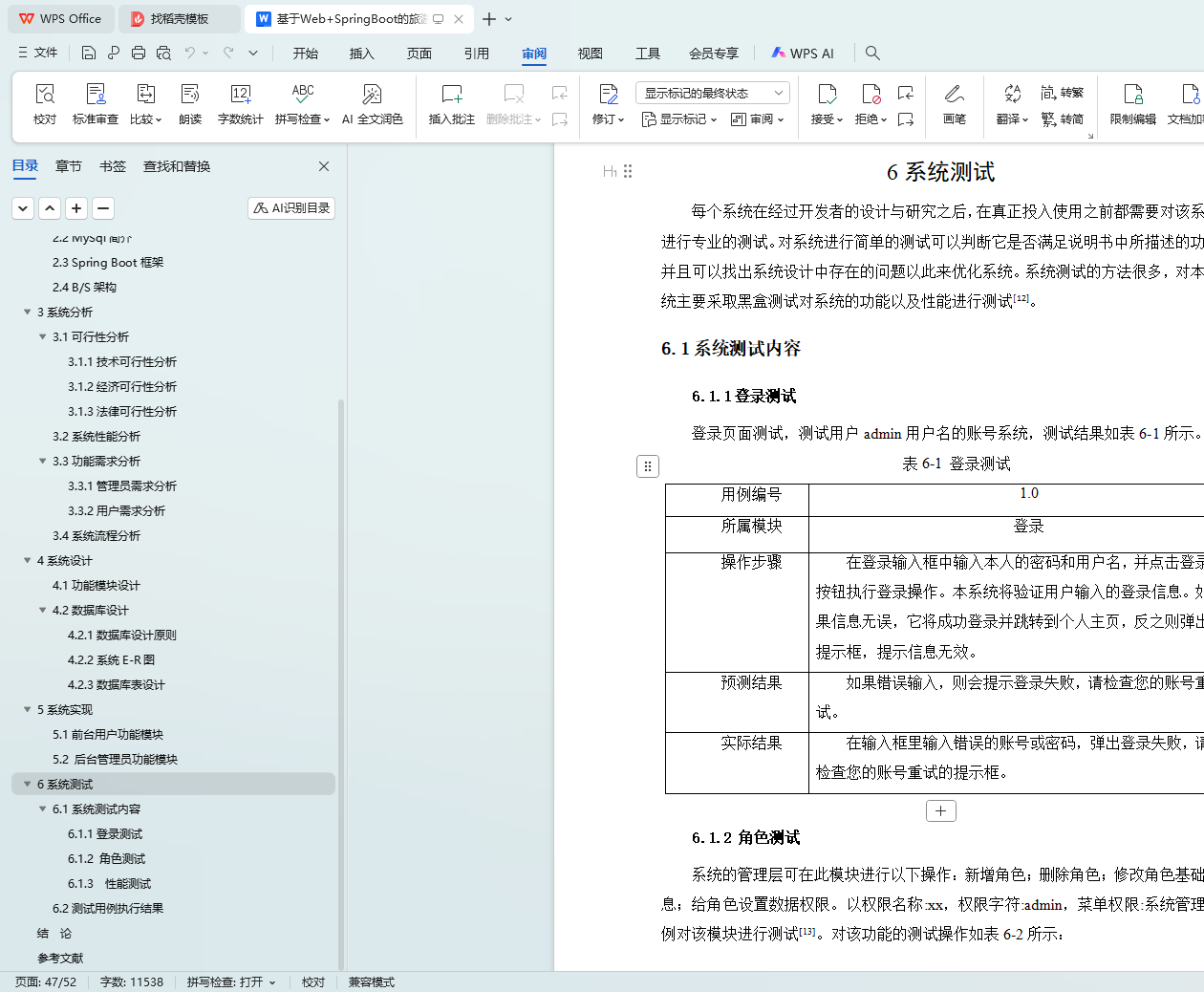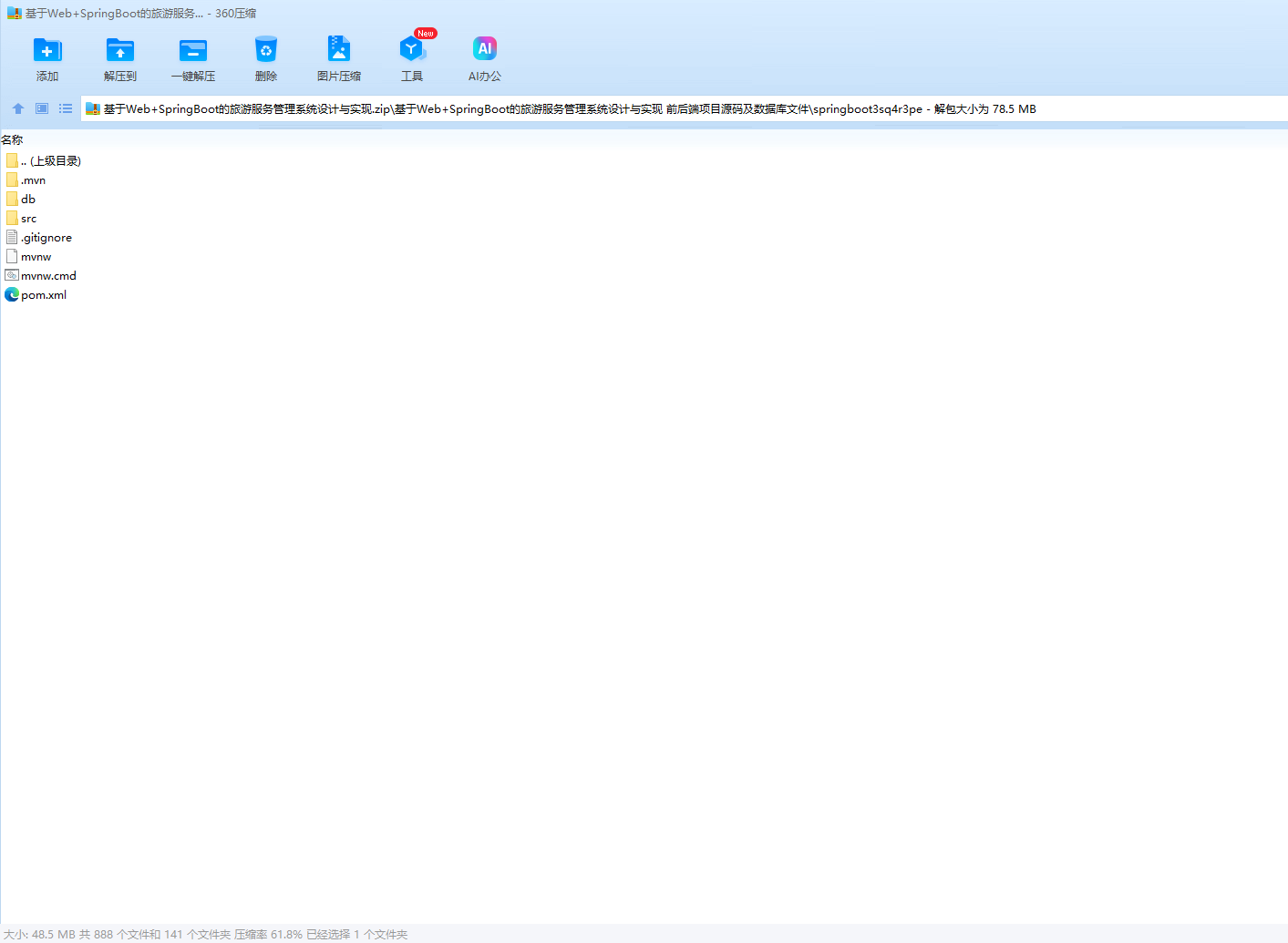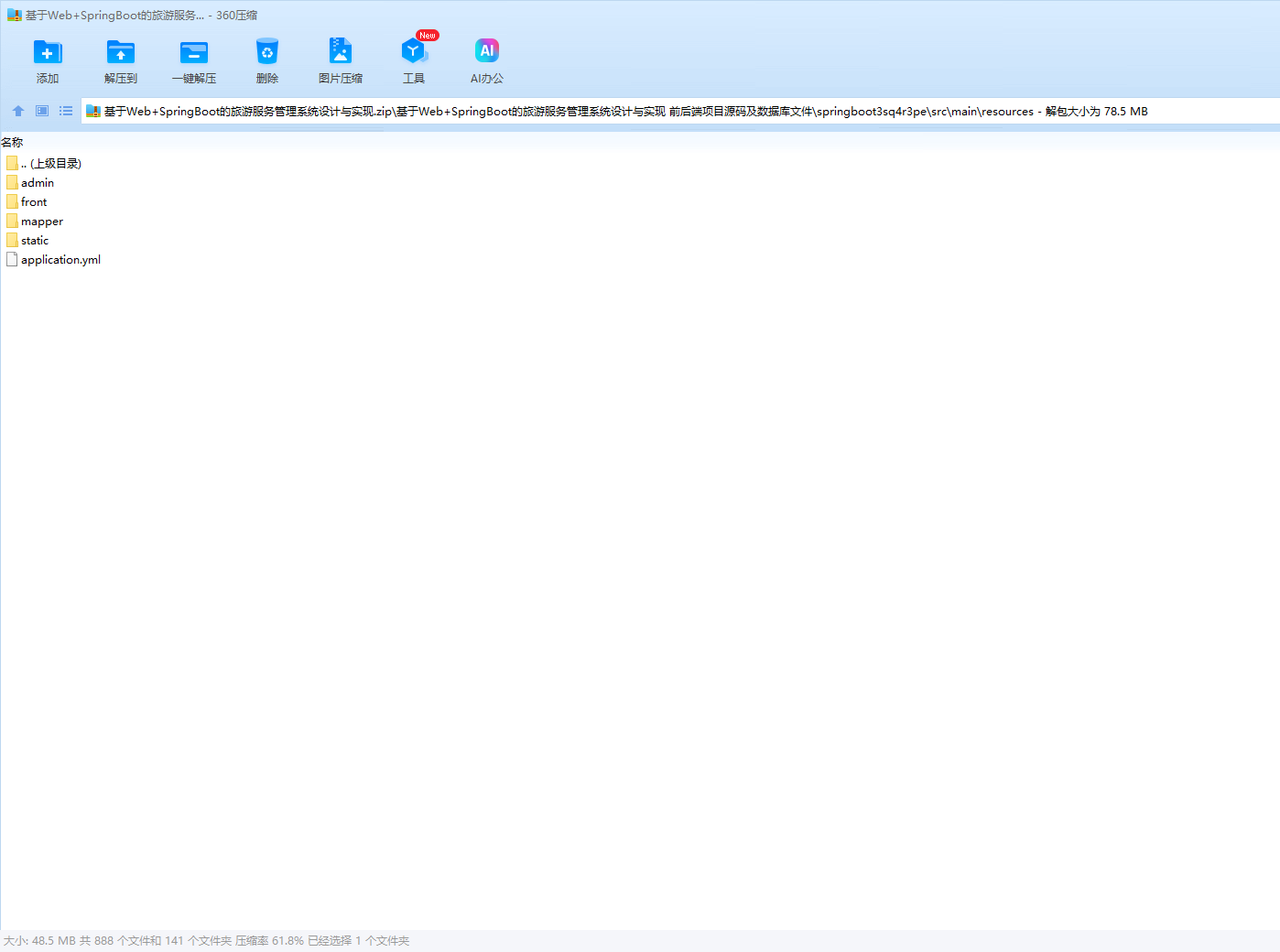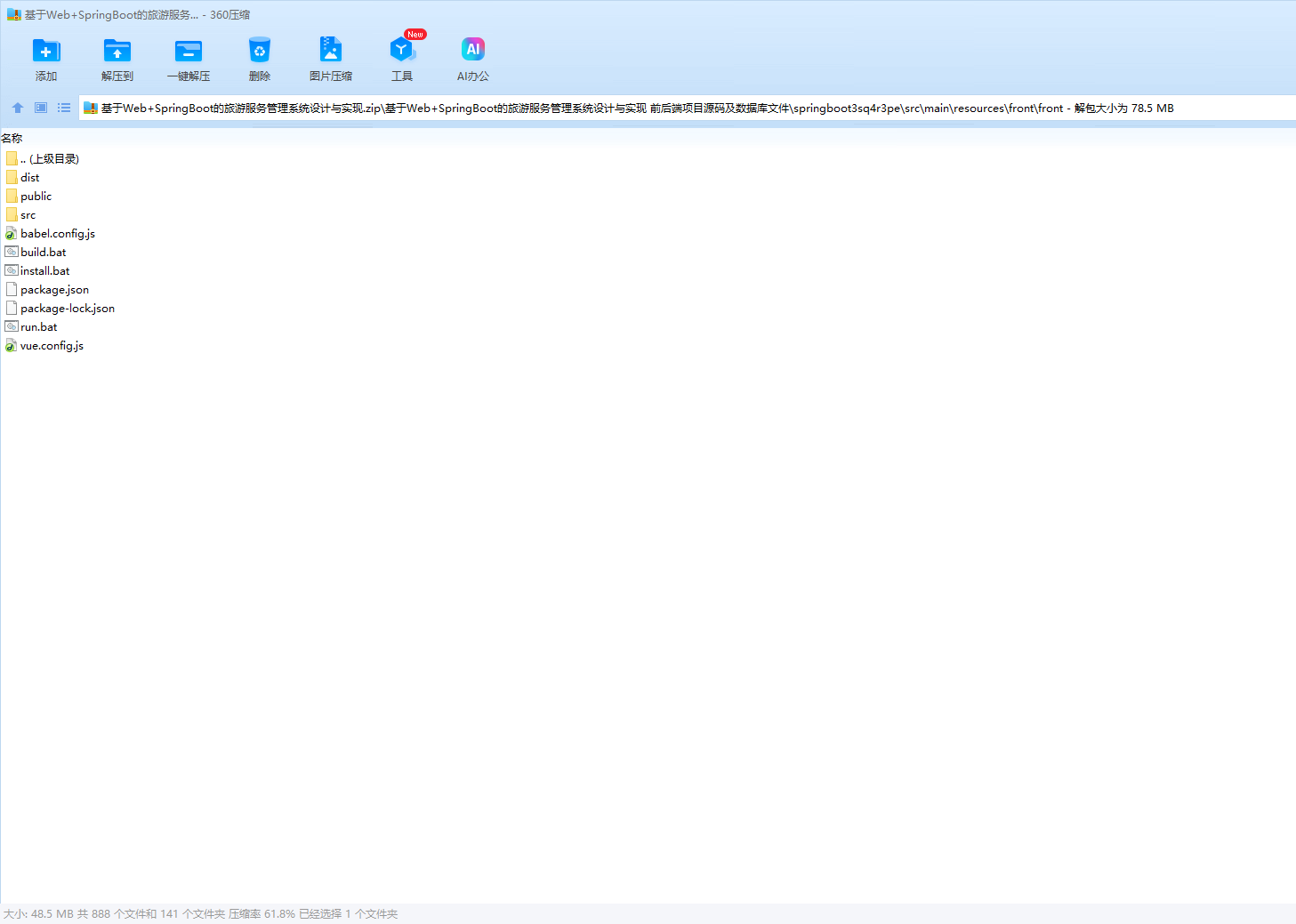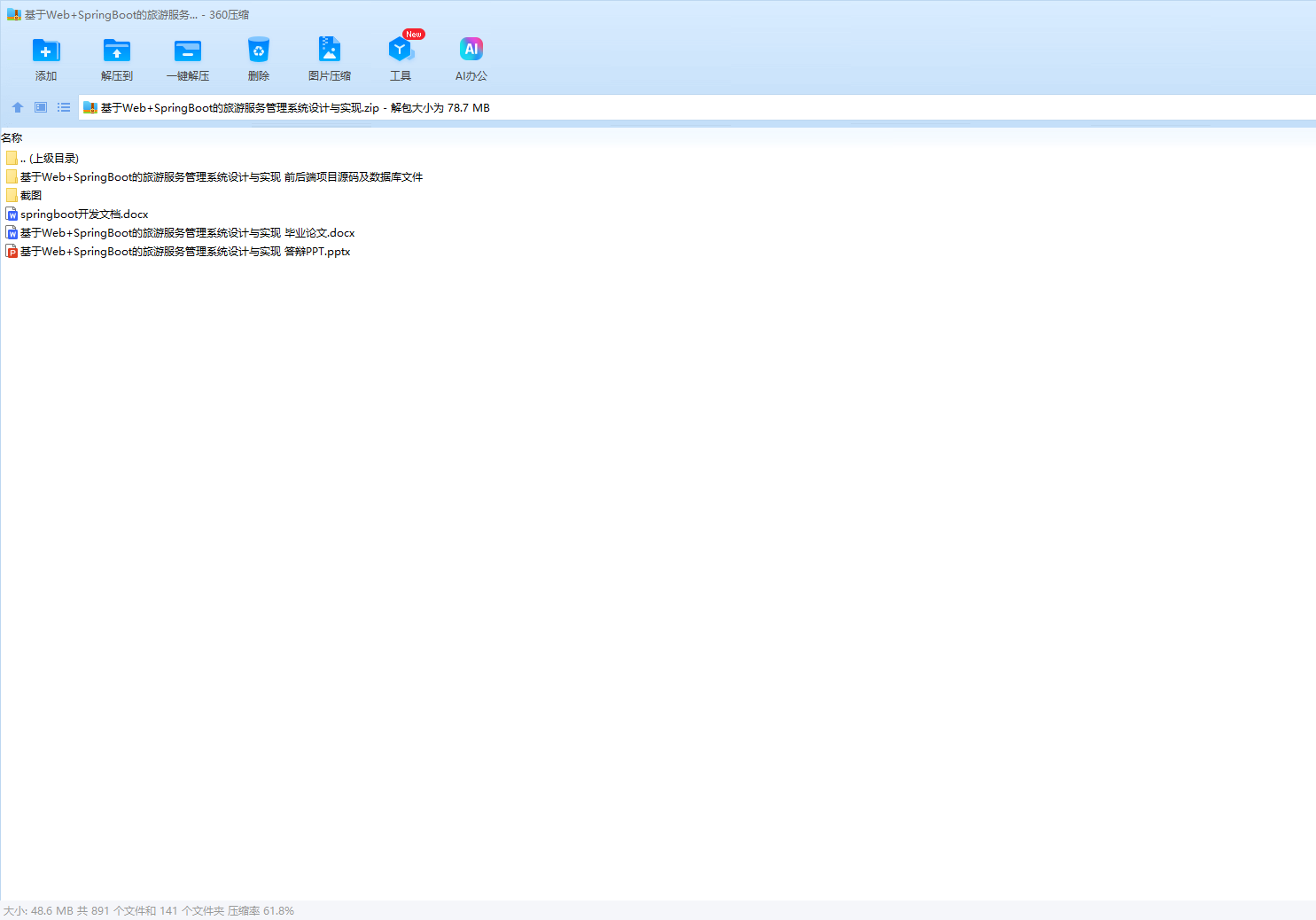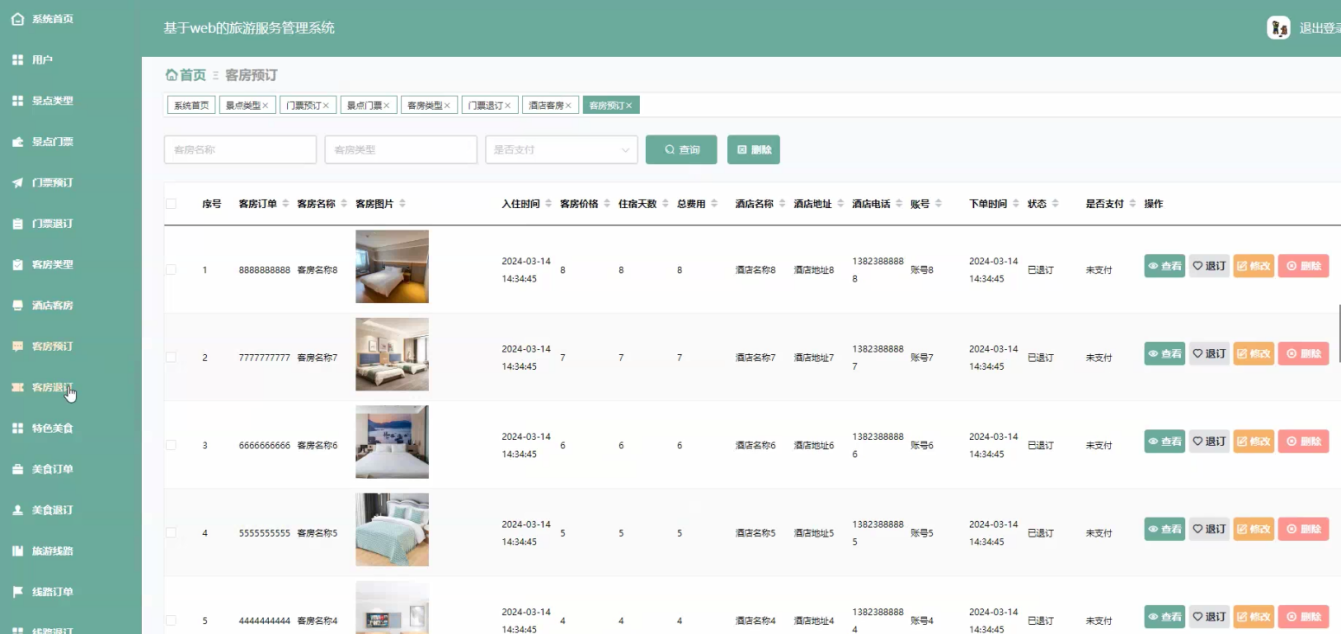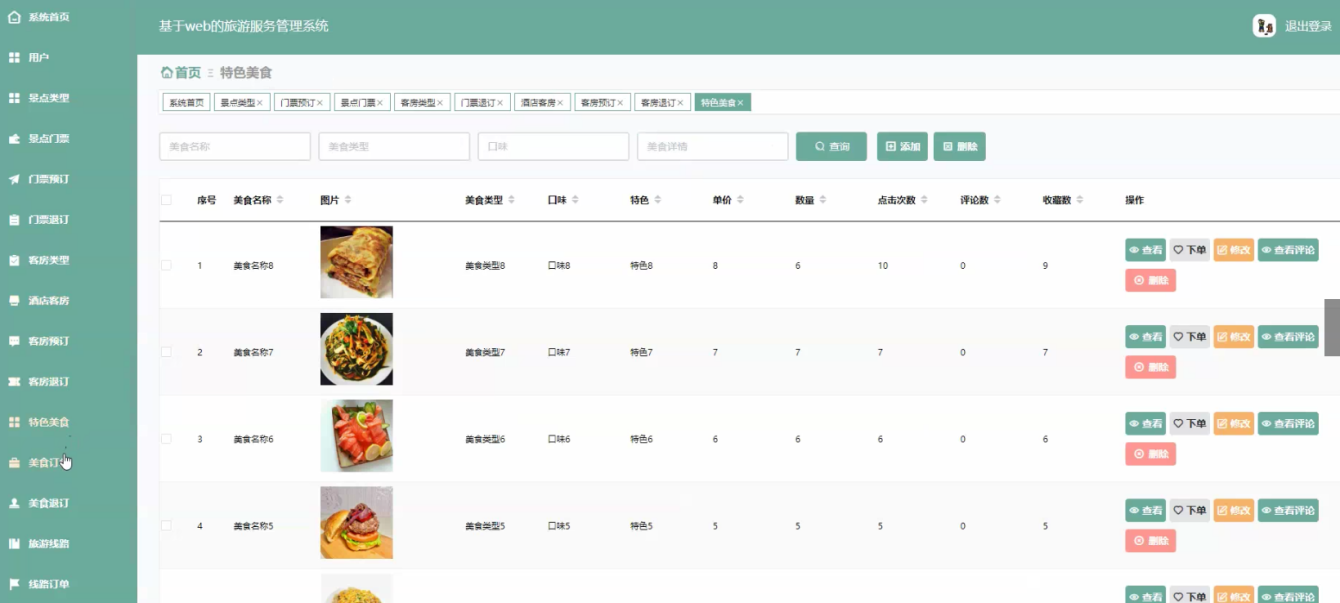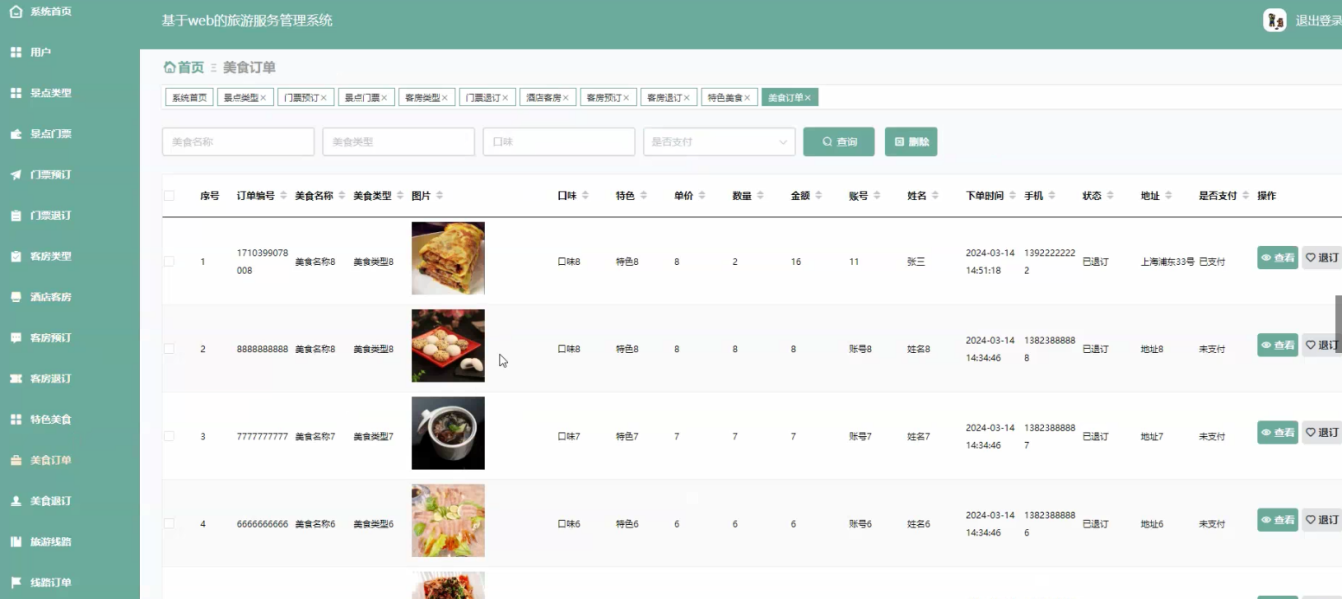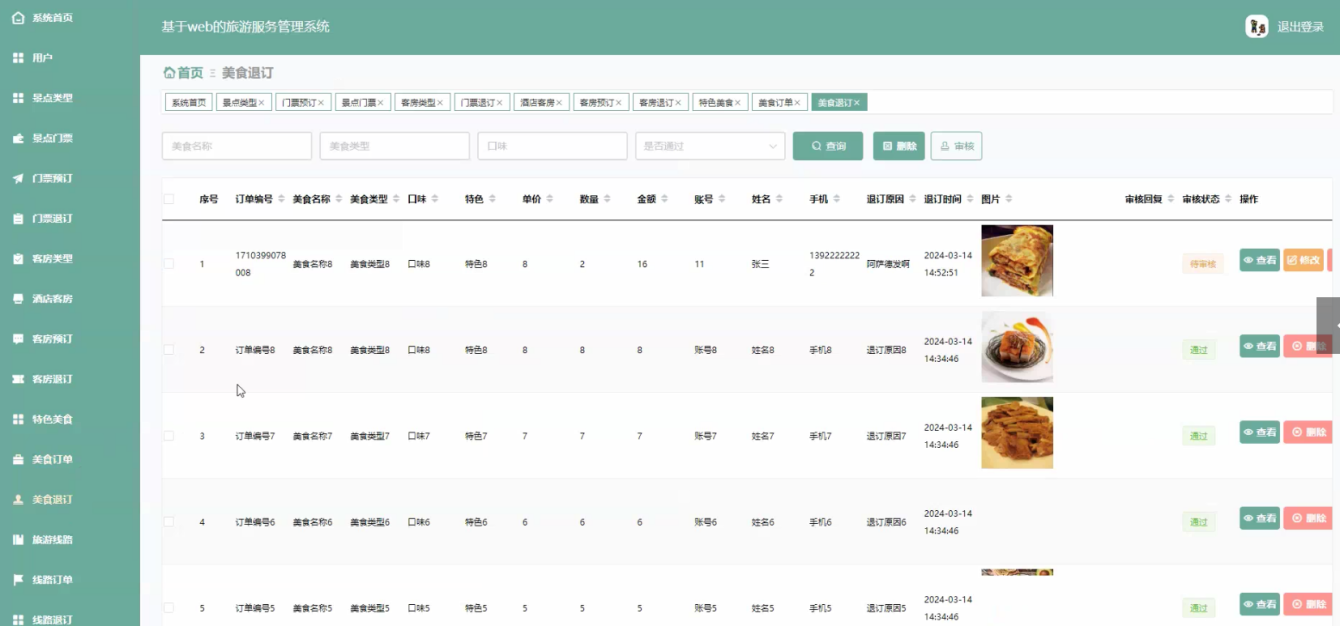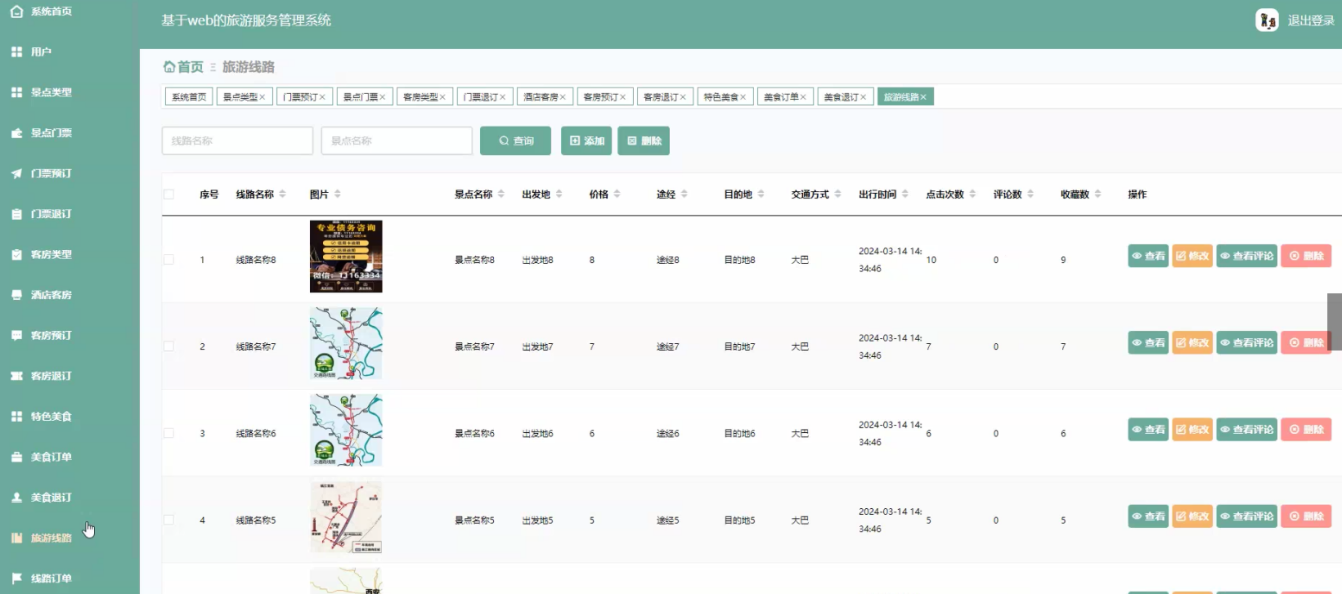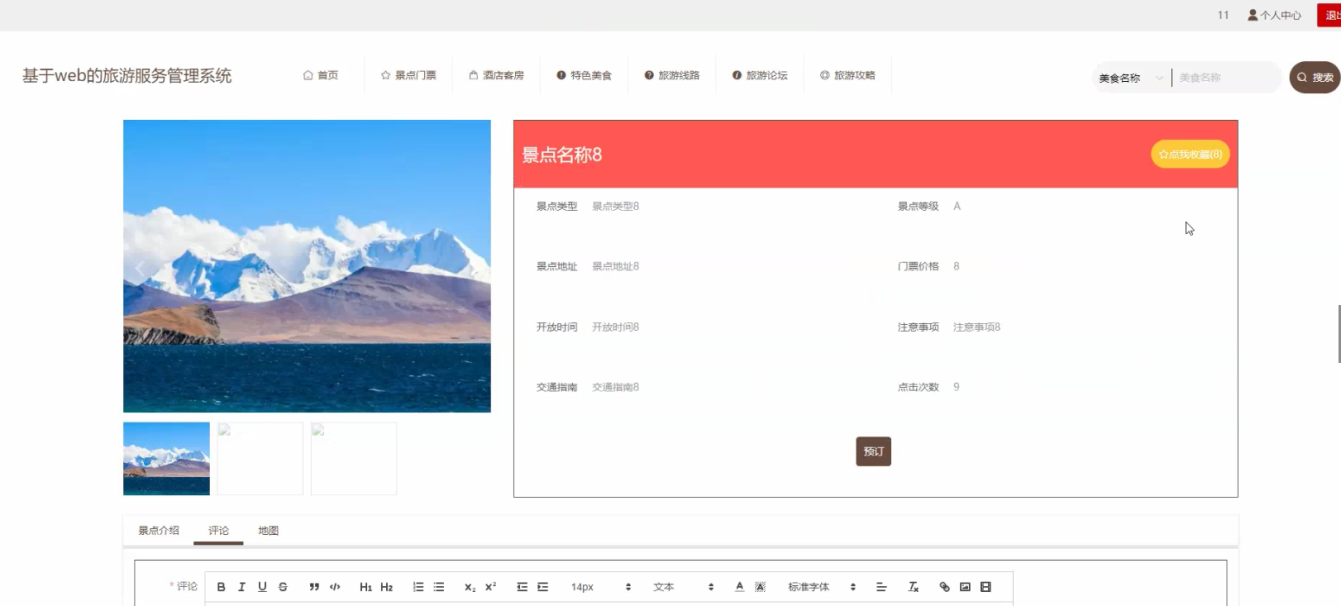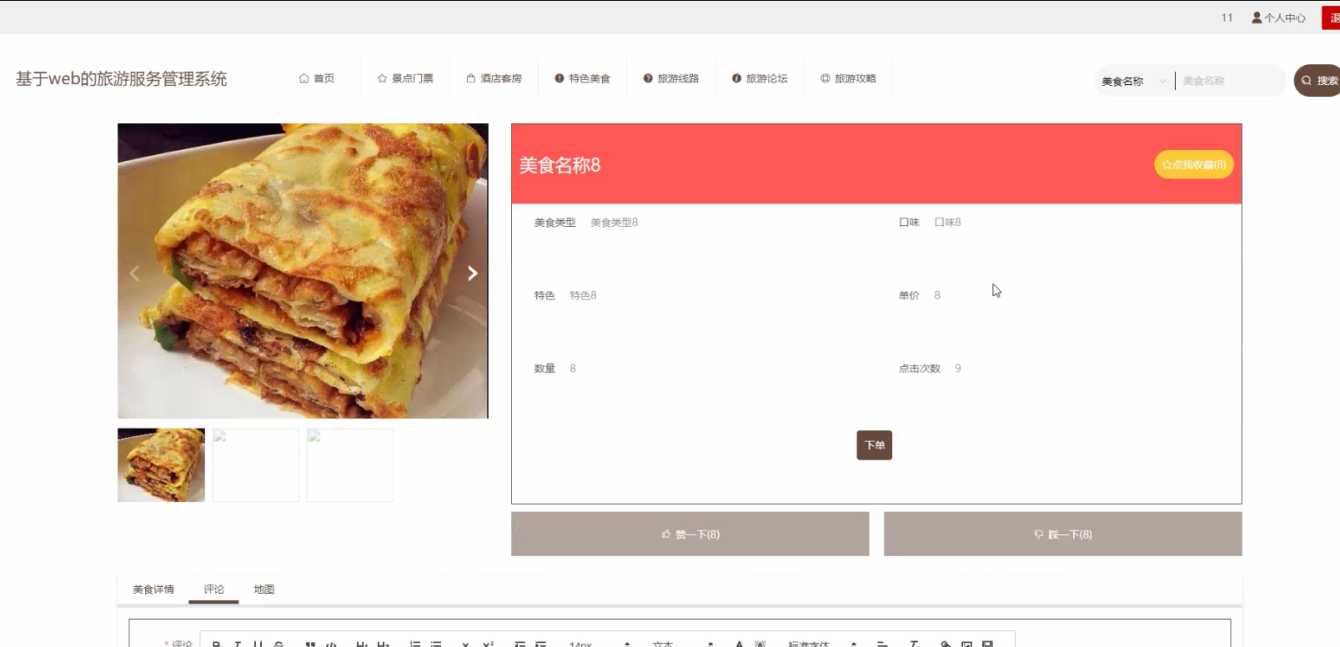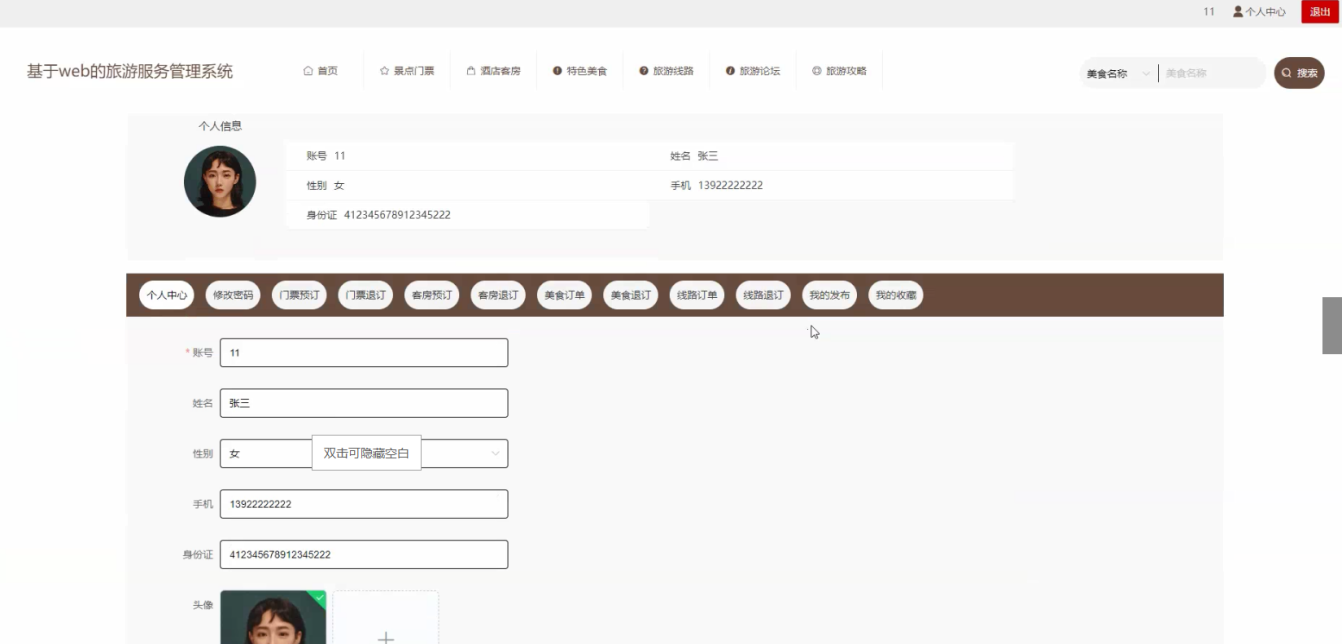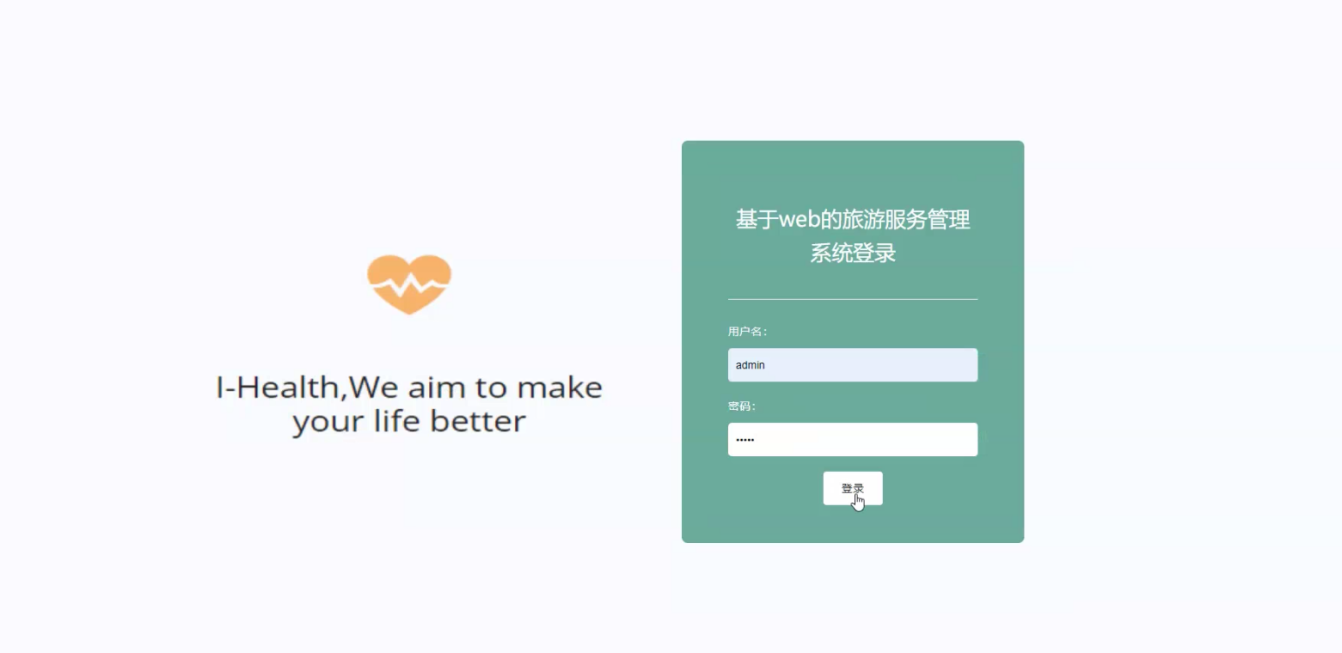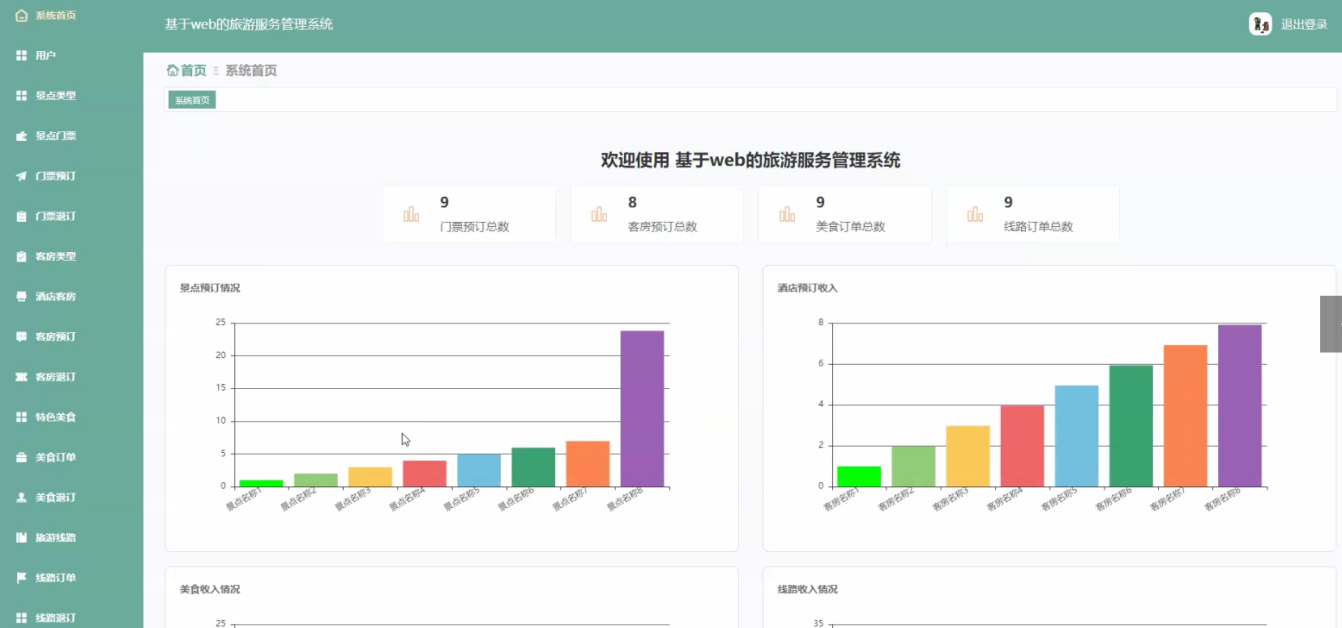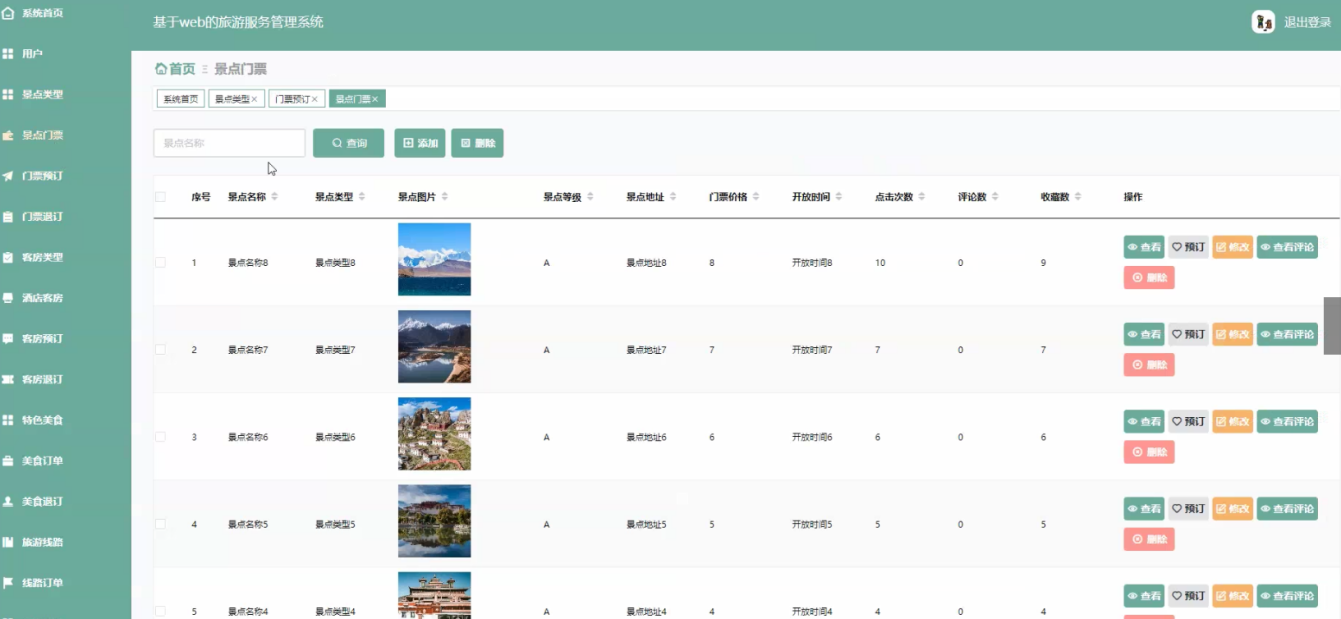摘 要
随着我国经济的高速发展与人们生活水平的日益提高,人们对生活质量的追求也多种多样。尤其在人们生活节奏不断加快的当下,人们更趋向于足不出户解决生活上的问题,旅游服务管理系统展现了其蓬勃生命力和广阔的前景。与此同时,为解决用户需求,旅游服务管理发展愈发多元化与网络化,与电子信息技术相结合。旅游服务管理系统应运而生。
该系统利用Java语言、MySQL数据库,Spring Boot框架,结合目前流行的 B/S架构,将旅游服务管理系统的各个方面都集中到数据库中,以便于用户的需要。该系统在确保系统稳定的前提下,能够实现多功能模块的设计和应用。该系统由管理员功能模块和用户功能模块组成。不同角色的准入制度是有严格区别的。各功能模块的设计也便于以后的系统升级和维护。该系统采用了软件组件化、精化体系结构、分离逻辑和数据等方法。
关键字:旅游服务管理系统;Java语言;MySQL数据库;Spring Boot框架;
Abstract
With the rapid development of China's economy and the increasing improvement of people's living standards, people's pursuit of quality of life is also diverse. Especially in the current era where people's pace of life is constantly accelerating, they tend to solve problems in their daily lives without leaving their homes. The tourism service management system has demonstrated its vibrant vitality and broad prospects. At the same time, in order to meet user needs, tourism service management has become increasingly diversified and networked, combined with electronic information technology. The tourism service management system has emerged.
The system utilizes Java language, MySQL database, Spring Boot framework, and the current popular B/S architecture to centralize all aspects of the tourism service management system into the database, in order to meet the needs of users. The system can achieve the design and application of multifunctional modules while ensuring system stability. The system consists of an administrator function module and a user function module. There are strict differences in the admission systems for different roles. The design of each functional module also facilitates future system upgrades and maintenance. The system adopts methods such as software componentization, refined architecture, and separation of logic and data.
Keywords: Tourism service management system; Java language; MySQL database; Spring Boot framework;
目 录
目 录
1绪 论
1.1开发背景
1.2开发目的与意义
1.2.1开发目的
1.2.2开发意义
1.3本文研究内容
2开发技术
2.1 Java语言
2.2 MySql简介
2.3 Spring Boot框架
2.4 B/S架构
3系统分析
3.1可行性分析
3.1.1技术可行性分析
3.1.2经济可行性分析
3.1.3法律可行性分析
3.2系统性能分析
3.3功能需求分析
3.4系统流程分析
4系统设计
4.1功能模块设计
4.2数据库设计
4.2.1数据库设计原则
4.2.2系统E-R图
4.2.3数据库表设计
5系统实现
5.1 前台用户功能模块 17
5.2 后台管理员功能模块 21
6系统测试
6.1系统测试内容
6.1.1登录测试
6.1.2角色测试
6.1.3性能测试
6.2测试用例执行结果
结 论
参考文献
致谢
